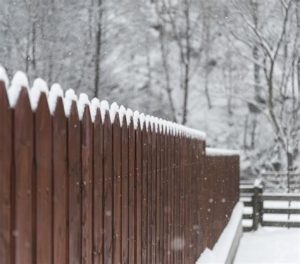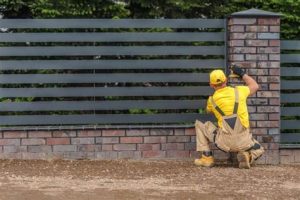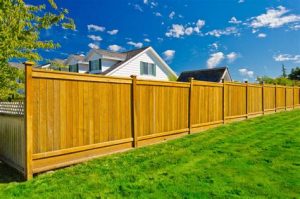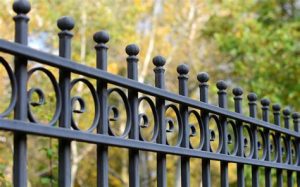Discover essential tips on selecting materials, preparing your yard, installation options, weather factors, and winter maintenance for your outdoor projects.As winter approaches, many homeowners begin to think about enhancing their outdoor spaces, and one significant improvement can be the installation of a new fence. A well-constructed fence not only adds privacy and security but also elevates the aesthetic appeal of your home. However, winter presents unique challenges and considerations that can affect the installation process. From choosing the right materials that withstand colder temperatures to preparing the ground and deciding between a DIY approach or hiring professionals, every decision is crucial to ensure long-term success. In this blog post, we will explore essential tips for winter fence installation, including how to navigate weather conditions and the importance of proper maintenance throughout the chilly months. Embrace the season wisely and transform your property with a sturdy, stylish fence!
Choosing the Right Materials
When it comes to winter fence installation, selecting the right materials is crucial. The material you choose can greatly affect the longevity and effectiveness of your fence in harsh weather.
| Material | Pros | Cons |
|---|---|---|
| Wood | Natural aesthetic, customizable, good insulation | Requires regular maintenance, can rot or warp in moisture |
| Vinyl | Durable, low maintenance, resistant to snow and ice | Higher initial cost, less traditional look |
| Metal | Strong, long-lasting, ideal for security | Can rust if not treated, may not insulate well |
Choosing the right material also involves considering the style and aesthetic of your home. For example, while wood may lend a rustic charm, vinyl could offer a more polished or modern look.
Another important factor is to be mindful of your local climate. Some materials perform significantly better in cold conditions than others. For instance, vinyl is often recommended for its resilience against cracking and breaking during extreme temperatures.
Ultimately, when choosing fence materials for winter installation, balance functionality, aesthetic appeal, and maintenance needs to ensure a successful and durable outcome.
Preparing the Ground
Proper preparation of the ground is crucial for ensuring a successful winter fence installation. Before you start digging or laying any materials, it’s important to assess the area where the fence will be installed. This involves a few detailed steps that can save you time and effort in the long run.
First, you need to clear the area of any debris such as rocks, branches, and old fence posts. Not only does this give you a clean slate to work on, but it also allows you to see the soil conditions better. If the soil is too soft or muddy, consider delaying your installation until the ground has dried up to avoid problems later on.
To understand the land contours, use a level to check for any slopes or dips that might affect the fence’s stability. This might require some additional work to even out the ground. Moreover, take note of any underground utilities. Call your local utility company to mark them, ensuring you don’t accidentally damage any lines during installation.
| Preparation Step | Description |
|---|---|
| Clear the area | Remove rocks, branches, and debris from the ground. |
| Check soil conditions | Ensure the ground is firm enough for digging. |
| Assess land contours | Use a level to check for slopes or dips. |
| Locate utilities | Contact local company to mark underground lines. |
By following these steps for ground preparation, you set the foundation for a successful fence installation that will withstand the harsh winter conditions. Taking the time to prepare properly will safeguard your investment and ensure your fence stands the test of time.
DIY vs Professional Installation
When it comes to installing a fence during the winter months, one of the most critical decisions you’ll make is whether to go the DIY route or hire a professional. Both options come with their own set of advantages and challenges that can impact not only the installation process but also the longevity and effectiveness of the fence.
For those considering DIY installation, it offers the opportunity for personal involvement and potential cost savings. You can choose your materials, set your timeline, and tailor the project to your specific needs. However, winter conditions can complicate the installation process, affecting everything from ground preparation to selecting the right materials that can withstand cold temperatures.
On the other hand, opting for professional installation ensures that you have skilled experts managing the intricacies of the project. Professionals understand the nuances of winter fencing challenges and are equipped with the right tools and experience to handle tricky conditions, such as frozen ground and unpredictable weather. While this option might have a higher upfront cost, it often leads to a more durable and aesthetically pleasing result.
Ultimately, your choice between DIY and professional installation will depend on your budget, skills, and how much time you’re willing to invest in the project. Each approach has its merits, and aligning your decision with your circumstances will lead to a successful winter fence installation.
Weather Considerations
When planning your winter fence installation, taking into account the weather is paramount. Winter conditions can significantly impact the timing and method of installation. It’s crucial to understand how cold temperatures, snow, and frozen ground can affect your project.
First, consider the temperature fluctuations during the winter months. Extreme cold can cause materials to become brittle and less workable. For instance, wood may crack or warp, while metal fences could suffer from brittleness. Therefore, it’s advisable to choose materials specifically designed for winter durability.
Moreover, snow cover can hinder visibility and accessibility, leading to delays in installation. Plan your project around weather forecasts and be prepared for potential interruptions. It’s also wise to check the ground conditions; if the ground is frozen, you may need specialized equipment for digging and anchoring your posts properly.
Lastly, ensure that your installers are experienced in tackling winter conditions. This knowledge will help to minimize risks and ensure that the installation is both stable and effective for the harsh winter months ahead.
Proper Maintenance for Winter
Winter can be a challenging season for outdoor structures, including fences. To ensure your fence remains functional and aesthetically pleasing throughout the colder months, proper maintenance is essential. Here are some tips to help you prepare your fence for winter.
First, it’s important to conduct a thorough inspection of your fence. Look for any signs of wear or damage, such as loose boards, rusted metal parts, or cracked wood. If you notice any issues, take the time to repair them before winter truly sets in. A well-maintained fence will withstand the harsh elements much better than a neglected one.
Additionally, consider applying a protective coat to your fence. For wooden fences, a weatherproof sealant can help protect against moisture and prevent rot. Metal fences may benefit from a rust-inhibiting spray. Taking these preventive measures will significantly prolong the life of your fence during winter.
| Maintenance Tips | Recommended Actions |
|---|---|
| Inspect for Damage | Repair loose boards and replace damaged parts. |
| Clean the Surface | Remove dirt, snow, and debris from the fence. |
| Apply Protective Coating | Use sealants for wood and rust-inhibitors for metal. |
Frequently Asked Questions
What are the best materials for winter fence installation?
The best materials for winter fence installation include vinyl, aluminum, and treated wood, as they can withstand cold temperatures and are less likely to warp or crack.
How should I prepare the ground for fence installation during winter?
To prepare the ground for winter fence installation, clear any snow and ice from the area and ensure the ground is stable. If the ground is frozen, use a post hole digger or provide heat to thaw the earth.
Are there any specific tools needed for winter fence installation?
Yes, specific tools such as a post hole digger, sledgehammer, and power tools with a heated enclosure can help with ice and snow, making the installation easier during winter.
What are the common challenges faced during winter fence installation?
Common challenges include frozen ground, snow accumulation, and extreme cold that can make working conditions uncomfortable and affect the physical properties of materials.
How can I ensure my fence posts set correctly in winter?
To ensure proper setting of your fence posts in winter, consider using fast-setting concrete that can cure in lower temperatures, or use gravel to line the holes for better drainage.
Can I install a fence under snowy conditions?
Yes, you can install a fence under snowy conditions, but it’s important to clear the area and consider the snow’s weight on things like fence panels and gates.
What maintenance should I perform on my fence after winter installation?
After winter installation, regularly inspect the fence for any damage from snow or ice, ensure gates operate smoothly, and treat wooden fences with protective sealants to prevent moisture damage.




